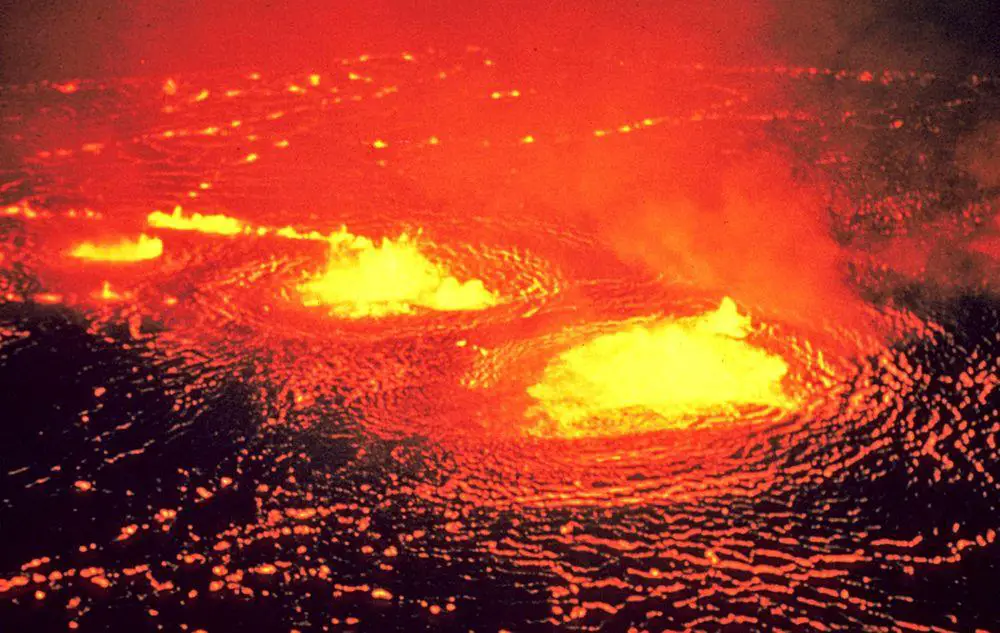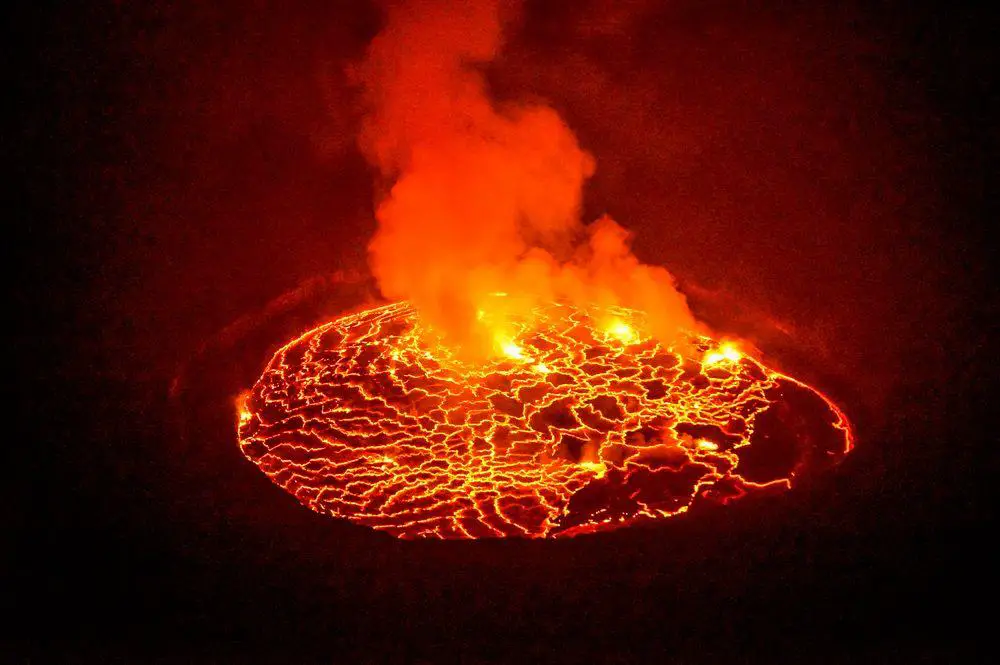World 🢖 Australia and Oceania 🢖 Polynesia 🢖 United States 🢖 Hawaii 🢖 Hawai’i
Volcanoes 🢔 Geological wonders 🢔 Categories of wonders
Wonder
Halemaumau Crater with lava lake, Kilauea
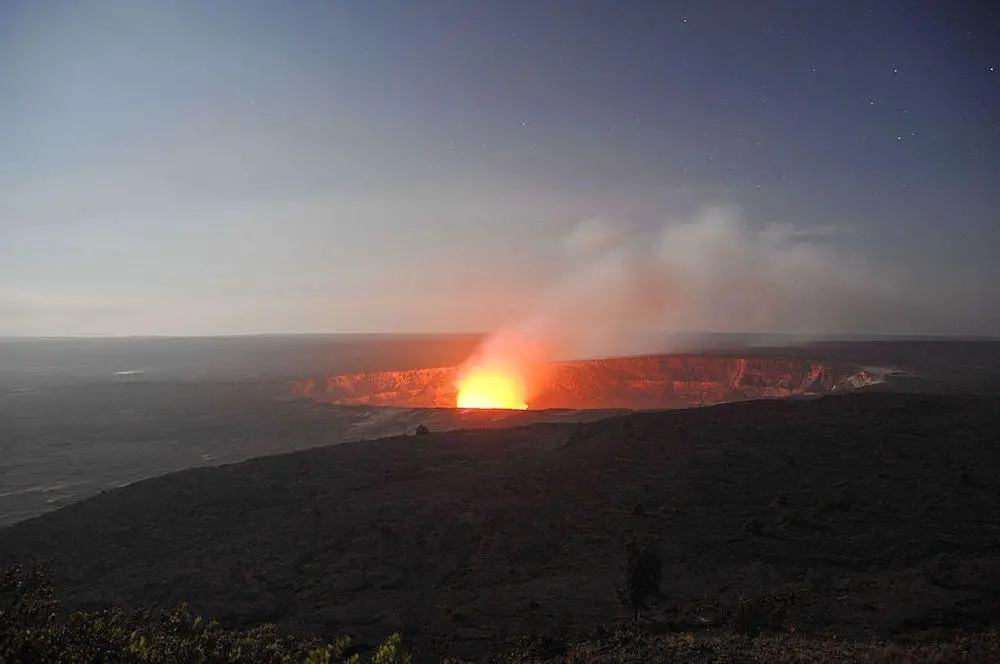
 In short
In short
It is possible that Kilauea is the most active volcano in the world. The caldera at the summit of this volcano until recent times contained a deep pit – Halemaumau Crater – with a lava lake in it. Now, in May 2019, the lava lake has disappeared and the pit – Halemaumau crater – has partly collapsed.
 50.0%
50.0%
GPS coordinates
Location, address
Alternate names
Height
UNESCO World Heritage status
Map of the site
If you see this after your page is loaded completely, leafletJS files are missing.
 In detail
In detail
Kilauea – one of the most active volcanoes in the world
Until recent times geologists thought that Kilauea (correct – Kīlauea) is a side crater of another volcano – the giant Mauna Loa whose caldera is some 33 km to the north-west.
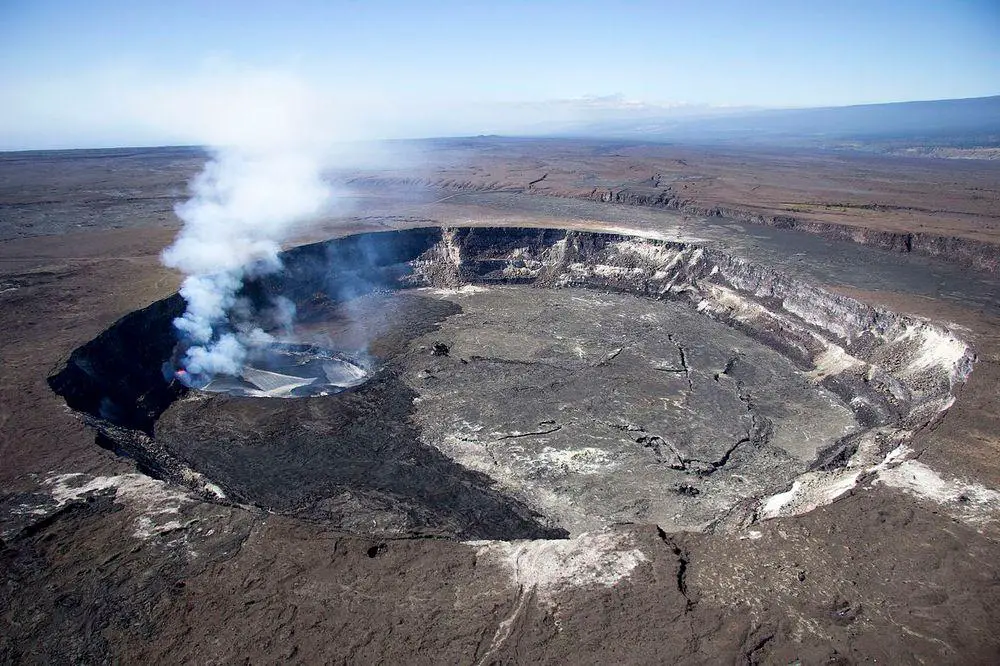
Now it has been proved that Kilauea is a separate volcano that has its own plumbing of magma extending more than 60 km deep.
Kilauea with its numerous vents and side craters have formed the south-eastern part of Hawaii Island. It is some 1.2 km tall, with gentle slopes – a typical shield volcano. The landscape around the summit of the volcano is barren, even desert-like: the frequent lava flows and sulfurous smogs (called – vogs) have eliminated most of the vegetation.
The volcano has more than 10 craters that like a row of bullets from automatic weapons have pierced the island. The most famous and most interesting is the westernmost crater – Kilauea Caldera. This is a magnificent 4 by 3.2 km large crater with walls that are up to 120 m high.
In the western part of this caldera is located a deep pit – Halemaumau Crater or, a more correct form – Halema’uma’u Crater – “house of the ‘āma’u fern”.
Halemaumau Crater and its lava lake
Halemaumau crater until the eruptions of 2018 was some 770 by 900 m large. The depth of it is unknown – for the most part of the time since the discovery this pit has been filled with a lava lake. And lava lakes… well, these easily could be the deepest lakes in the world, extending below the crust of the Earth.
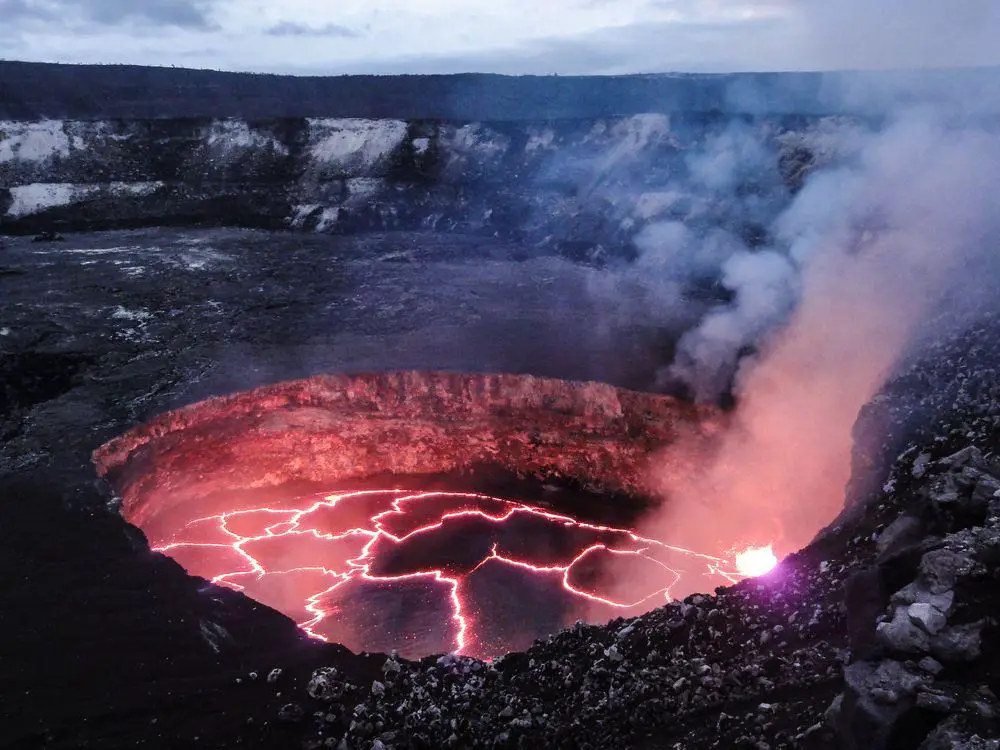
There are very few volcanoes in the world that have permanent or near-permanent lava lakes – some ten places around the world. The lava lake of Halemaumau Crater though is not exactly permanent… because now, in 2019 it’s gone.
At some periods of the time Kilauea volcano had one more lava lake some 18 km to the south-east, in another crater named Pu’u ‘Ō’ō. Here such a lake existed, for example, in 1986 – 1997 and 2011 – 2018. Currently (in 2019) there is no lava lake in this crater either.
History
Of course, Hawaiians knew about the volcano since their arrival – but there are no written sources. It is known that in 1790 there was a terrible, explosive eruption that killed people.
The first known description by Europeans is left by William Ellis, a missionary and geologist in 1823. It seems, already then there was a lava lake in the crater. Mark Twain observed the lava lake in 1866 and was enchanted by the incomparable beauty of this place.
In 1912 geologist Thomas Jaggar founded an observatory here. This area in 1916 became Hawaii Volcanoes National Park and step by step Kilauea turned into a scientific base for the exploration of geological processes as well as a top tourist destination as well.
There is much to explore and to see around the Kilauea volcano. Since 1952 there have been at least 34 eruptions, each of them different.
Eruption in 1983 – 2018
The latest eruption started in 1983 and with some periods of silence continued up to 2018.
The lava lake in the crater changed a lot numerous times during this time period. For example, in April 2015 lava spilled over the rim of the crater on the floor of the caldera covering it with a 9 m thick layer. By late 2016 it was one of the largest lava lakes in the world, some 250 m by 190 m large.
After repeated floods of lava in May 2018, everything changed to the opposite. The level of the lava lake dropped and it disappeared at least 340 meters down in the crater. This was accompanied by powerful explosions and local earthquakes, from the crater rose clouds of hot ash and toxic gases. The walls of the crater started to collapse and the lake is not visible anymore.
This coincided with another event: lava started to pour out from the ground some 40 km to the east, in Leilani Estates. This idyllic Hawaiian village and other villages and resorts in the area were attacked by lava, which soon reached the sea, changing the coastline and covering with lava some 35 km2. Most likely the disappearance of the lava lake in Halemaumau is linked to this flood of lava.
The area was closed for visitors from May 10 to September 22. Now, in 2019 the eruption has stopped but the landslides around the crater continue – even the building of Jaggar Museum is endangered and abandoned. This was the largest eruption of Kilauea over the last 200 years.
In August 2019 it was reported that on the floor of the crater has appeared a rather common lake, consisting of… water. This water is fairly hot – around 70° C. (3)
Legends and ghost stories
Halemaumau Crater is a very important sacred site for Hawaiians and traditional offerings are made here up to this day.
According to the local beliefs, Halemaumau Crater is the abode of Pele – Hawaiian goddess of fire and volcanoes. This goddess created the Hawaiian Islands and after lengthy wanderings and numerous battles found peace in this crater. Hawaiians call this place also Ka Piko o ka Honua – the Navel of the World.
People tell also that Pele appears to some people before dangerous eruptions. She is either an old woman or a young, beautiful lady in a red robe (muumuu) and accompanied by a small, white dog. Of course, one should be polite and help the goddess.
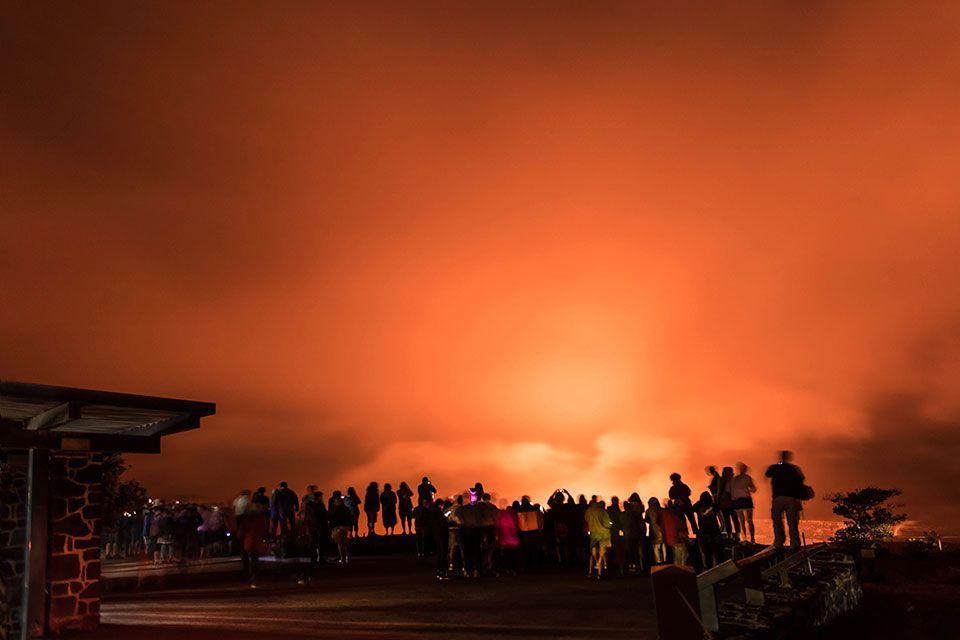
A weird silhouette has been noticed in several images of the eruption of Kilauea in 2018 and earlier. The silhouette of a black woman with glowing eyes is seen in a photograph of a lava stream falling in the sea.
One more belief of Kilauea: guests should not take anything from here – the stone from the summit of the volcano (or even anywhere on the island) will bring unhappiness at home. Reportedly, many visitors sent back to Hawaii such souvenirs after their families and houses have been hit by repeated calamities. Reading their letters is quite impressive.
References
- Chronology of Kīlauea’s summit eruption, 2008 – 2017, USGS website. Accessed on May 22, 2019
- Return Lava Rock to Hawaii!, Volcano Gallery. Accessed on May 22, 2019
- Scientists: Water on floor of Halemaumau Crater is hot. Really hot., Hawaii News Now. Accessed on August 08, 2019
Halemaumau Crater is included in the following article:
 Linked articles
Linked articles
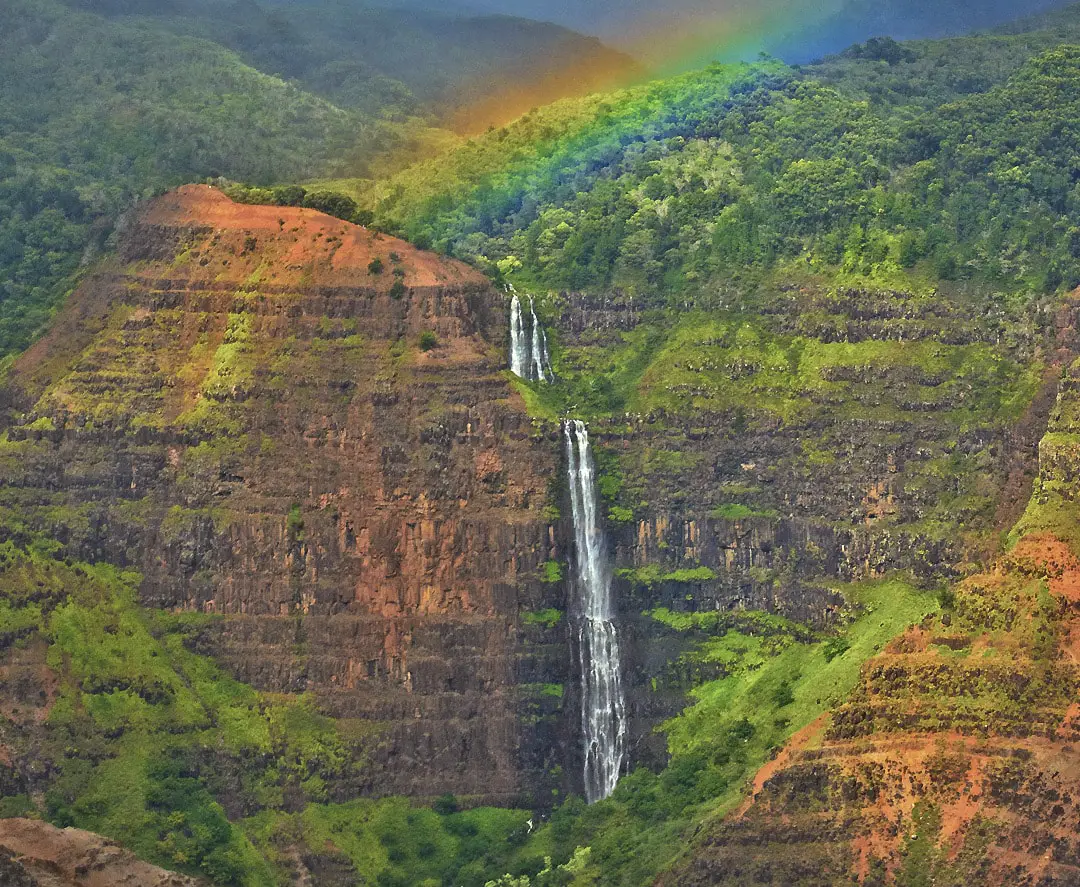
Wonders of Hawaii
The Hawaiian Islands belong to the most remote islands in the world. Hawaii is characterized by a tropical climate, mountainous relief, volcanism, and isolation. If compared to most islands in the Pacific, several Hawaiian Islands have comparatively large landmasses. All these factors have led to the development of numerous impressive and unique natural attractions and some impressive monuments of culture.
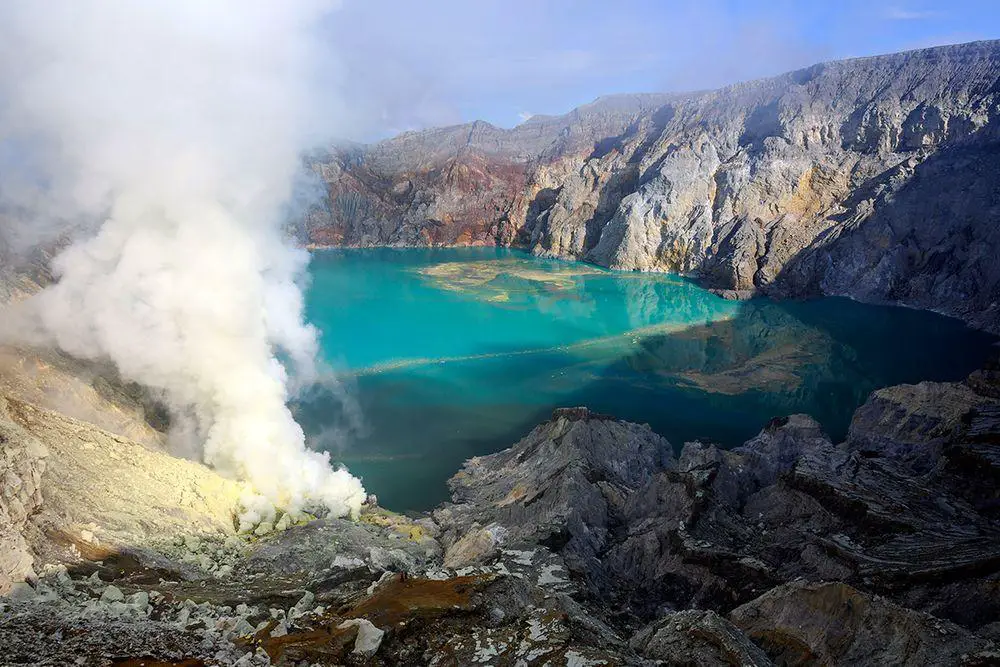
Lakes and streams
There are many factors that can make lakes, sea bays, or rivers unusual. Some lakes have unusual chemical properties and even do not contain water at all – such as lava lakes. Others may have unusual animals living in them or… legends about such animals.
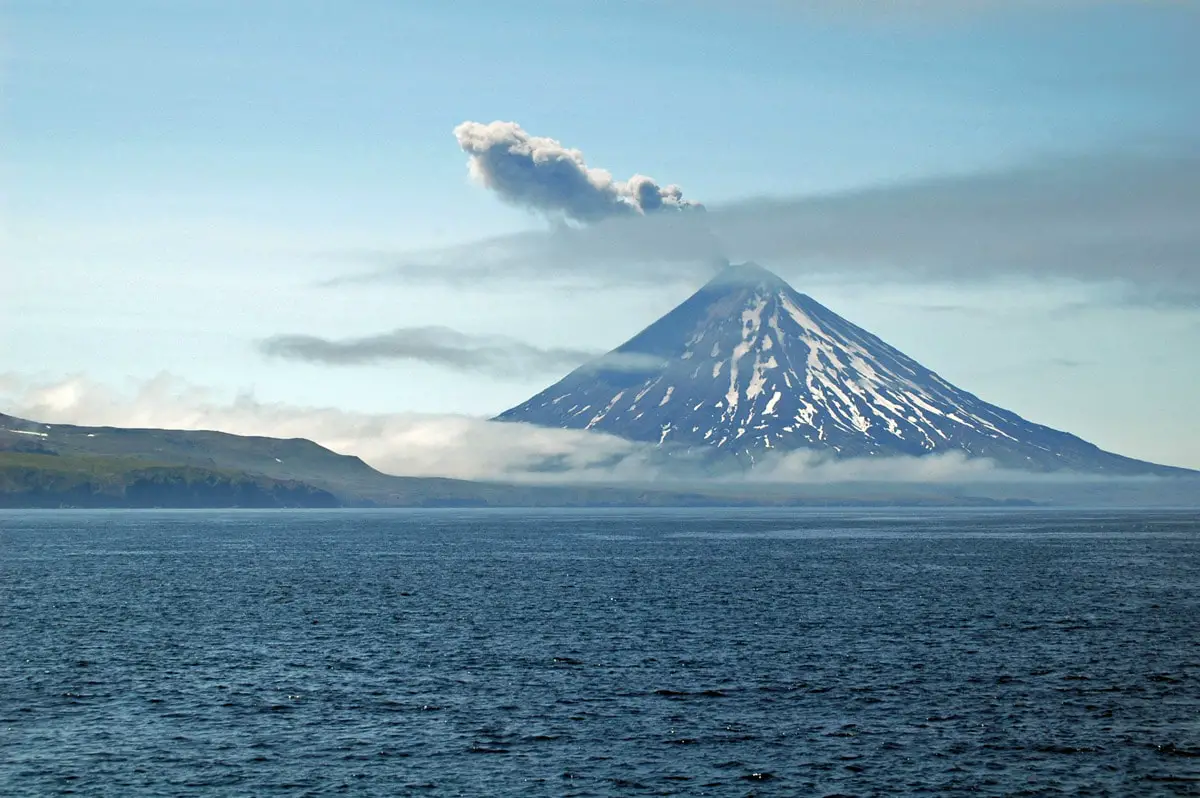
Volcanoes
This category includes the most unusual and interesting volcanoes of the world.
Over the last 10,000 years in some 1,500 places around the Earth mantle of Earth has emitted lava, ash, and gases through the crust of the planet. Each of these places is an active volcano. Some 50 – 70 volcanoes erupt every year and at any moment there are some 20 – 30 eruptions ongoing.
 Recommended books
Recommended books
Kilauea : The Newest Land on Earth
Dramatic photography and engaging text combine to capture the true beauty and spirit of Kilauea Volcano on the island of Hawai’i. Included is information on the volcano’s history, geology and tempestuous behavior.
The Last Volcano
Ranging from Yellowstone in Wyoming to Mount Pelee in the Caribbean, from Bogoslof and Pavlov in Alaska, to Sakurajima in Japan, and, finally, to the massive volcanoes of Kilauea and Mauna Loa in Hawaii―The Last Volcano reveals the incredible journey of a man on a mission to understand the awesome power of volcanic eruptions.

